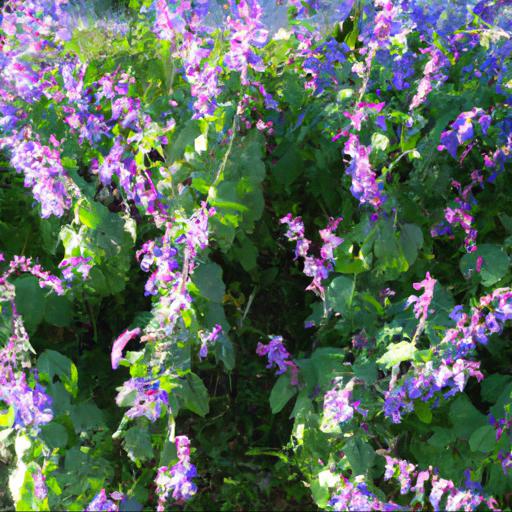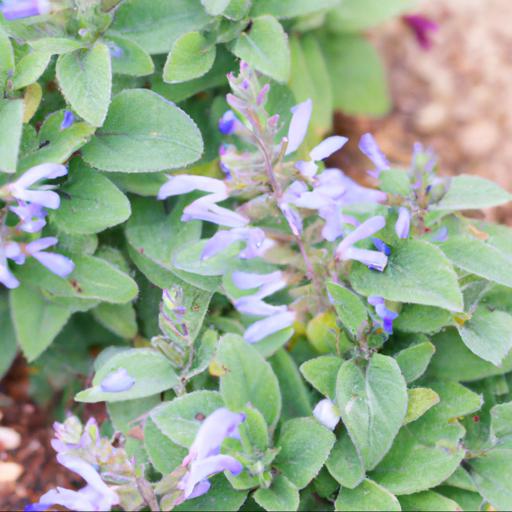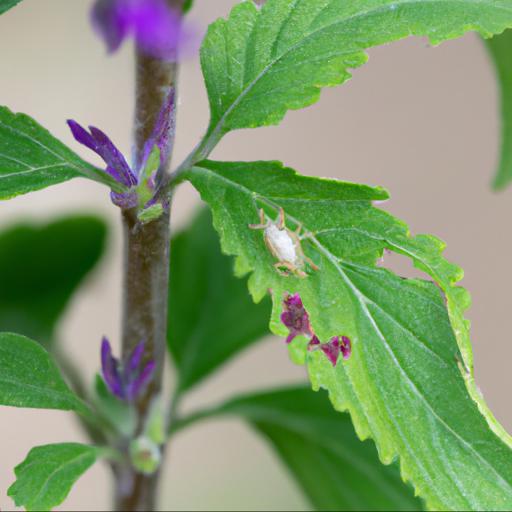Are you looking for a hardy, easy-to-grow perennial with beautiful blooms? Look no further than Salvia serenade! This sun-loving plant is a great choice for gardeners of all levels, as it is low maintenance and requires minimal care.
With its vibrant purple flowers, Salvia serenade adds a splash of color to any garden. This hardy plant is also drought-tolerant and deer-resistant, making it a great choice for gardeners in a variety of climates.
With a little love and attention, Salvia serenade will reward you with a stunning display of blooms for years to come.
Benefits of growing salvia serenade

In recent years, salvia serenade has become an increasingly popular garden choice for both green-thumbed and novice gardeners alike. While this perennial shrub may seem unremarkable at first glance, there are a number of benefits associated with growing salvia serenade that make it ideal for any home or commercial garden.
First and foremost, salvia serenade is both sturdy and easy to maintain. For those who may not be particularly experienced in gardening, growing salvia serenade is an ideal choice as its hardy nature means that little maintenance and upkeep is needed. When compared to other perennial plants, salvia serenade generally requires less water, nutrition and pest control, making it a perfect choice for those who find themselves short on time or patience.
Second, this shrub can provide a beautiful addition to any outdoor space. With deep blue or purple flowers and a vibrant green foliage, salvia serenade creates a lovely splash of colour in any garden.
That being said, the flowers of salvia serenade aren’t just aesthetically pleasing; they are also known to attract certain species of butterflies and hummingbirds. As a result, growing salvia serenade can be a great way to introduce wildlife into your garden and provide a constant reminder of nature’s beauty. Last but not least, salvia serenade is a drought-tolerant choice which makes it a great choice for any dry or arid garden.
As a result, it is a great option for those who live in dry climates, as the shrub will be able to withstand the harsh climate without requiring too much water or upkeep. Overall, salvia serenade is an excellent choice for novice and experienced gardeners alike.
As a tough and easy-to-maintain shrub, salvia serenade can provide some gorgeous plants with little to no effort. Furthermore, this shrub can give your garden a lovely splash of colour and provide a great environment for wildlife. Finally, salvia serenade is a perfect choice for any dry or arid garden, as it can survive without too much fuss.
When it comes to striking the perfect balance between ease of maintenance and gorgeous aesthetics, salvia serenade is the way to go!
Tips for planting and caring for salvia serenade

Most gardens have at least one salvia serenade planted in them, as this wonderful plant is a great addition to any garden. It is a hardy perennial, growing up to a foot and a half in height with a deep blue flowering head.
It is a great addition to any flower bed as it blooms earlier than most other plants and its vibrant blue colour compliments any other blooms in the garden. When planting salvia serenade, it is important to pick a sunny spot in the garden. Salvia serenade prefers partially shaded areas, and this will help the plant thrive and flower best.
It is also important to choose well-drained soil, as the plant cannot withstand being waterlogged. A layer of mulch or compost should be added to the soil for added protection and to keep the soil moist.
At the beginning of the season, you should apply a balanced fertilizer to the planted salvia serenade. This will ensure that the plant has the nutrients it needs to grow and flourish. When the flowering season has passed, you should cut the plant back to keep it looking neat and encourage healthy growth.
You should also prune away any dead or diseased branches to ensure the plant stays healthy. Caring for salvia serenade is relatively easy, with a little bit of effort each season.
This wonderful plant is a great addition to any garden, and with the right maintenance, it will thrive and bring a beautiful touch to any space.
Common pests and diseases of salvia serenade

As a UK garden expert, I know how important it is to keep an eye out for common pests and diseases of Salvia serenade. Salvia serenade, also known as Rosemary Sage, is a deciduous shrub that is native to Central America and Mexico.
While it is generally a hardy plant, it can be susceptible to a range of pests and diseases. One common pest that can affect Salvia serenade is spider mites. These tiny bugs can infest the plant, sucking the life out of the leaves and causing them to droop.
Spider mites can usually be seen as small webs on the underside of the leaves. Other signs to look out for include distorted flowers, yellow or white spots on the leaves, and a mottled foliage.
If not treated quickly, spider mites can cause extensive damage to Salvia serenade and even eventual death of the plant. Another pest that can affect Salvia serenade is whiteflies. These small, white insects feed off the juices of the leaves, causing them to turn yellow or die off entirely.
Whiteflies also excrete a sticky substance known as “honeydew”, which can attract other pests and can cause fungal growths. To treat whiteflies, it’s important to use insecticides that specifically target them, such as neem oil or insecticidal soap. Lastly, Salvia serenade can also be subject to various diseases caused by fungi or bacteria.
Common diseases in this area include powdery mildew, root rot, and bacterial leaf spot. These diseases are easily identifiable, and can be treated with a combination of good air circulation and a fungicide.
If left untreated, the disease can cause significant damage to the plant and can even lead to death. All in all, I would say that it’s important to keep an eye out for common pests and diseases of Salvia serenade, as these can lead to substantial damage or the death of the plant if not treated quickly. Keeping the plant healthy by providing enough sunlight and water, and making sure there is adequate air circulation, can help prevent some of these problems. Expert advice should always be sought if you are worried about any potential problems with your Salvia serenade.
How to use salvia serenade in landscaping
Salvia serenade is an attractive and versatile type of flowering shrub that can be used to great effect in landscaping projects. Whether you are looking for an eye-catching feature for your garden or a more wild and natural look, Salvia Serenade has something to offer.
In terms of ornamental flower beds, Salvia Serenade works especially well in sun-drenched spots. Planting a few Salvia Serenade specimens in hot-spot areas has many benefits, as the vibrant blossoms of Salvia Serenade will provide a welcome splash of colour throughout most of the year. For maximum effect, Salvia Serenade can be complimented with a mixture of other brightly coloured annuals and perennials.
This can create a striking design with plenty of visual appeal. Salvia Serenade can also be used in wildflower gardens or any other areas that are looking for an area of natural beauty. Instead of a traditional patchwork of cut grass, the Salvia Serenade plants can create an area of vibrant colour with a nicely contrasting range of different shades.
This is also an excellent way to attract pollinators and insects, so it’s beneficial to the environment as well. Finally, Salvia Serenade plants can be used to great effect in container gardens.
This is because they grow quickly and will fill in a windowbox or pot in no time. This method of planting Salvia Serenade plants is perfect for anyone looking for a low-maintenance garden solution, as these small-scale gardens can be quickly created and always look great.
In conclusion, Salvia Serenade is an attractive and versatile type of shrub that can help to add a sense of beauty to any landscaping project. Thanks to its wide range of applications, this shrub can be used in a variety of settings and is sure to add a unique touch to any garden.
Our video recommendation
Bottom Line
Salvia serenade is a beautiful, easy-to-grow perennial that offers an abundance of color and texture in the garden. With its attractive foliage and showy blooms, it’s a great choice for adding color and interest to any garden. Salvia serenade is a hardy plant that is drought tolerant and will thrive in a wide range of soils and climates.
It’s a great choice for adding a pop of color to any garden and is sure to be a showstopper.
FAQ
What is the scientific name of Salvia serenade?
The scientific name of Salvia serenade is Salvia lyrata.
What are the characteristics of Salvia serenade?
Salvia serenade is a perennial plant with bright green, lance-shaped leaves and tall, upright stems that produce spikes of bright blue flowers. It is drought tolerant and prefers full sun, but will tolerate some shade. It is also deer resistant and attracts hummingbirds and butterflies.
What is the ideal climate for growing Salvia serenade?
The ideal climate for growing Salvia serenade is one that is warm and sunny with well-draining soil. It prefers temperatures between 65-80°F (18-27°C) and should be protected from strong winds.
What are the common pests and diseases of Salvia serenade?
Common pests and diseases of Salvia serenade include aphids, spider mites, powdery mildew, and root rot.
How often should Salvia serenade be watered?
Salvia serenade should be watered when the soil feels dry to the touch, usually every 1-2 weeks.
What are the benefits of planting Salvia serenade?
The benefits of planting Salvia serenade include its ability to attract pollinators, its drought-tolerance, its low maintenance needs, and its long blooming season. Additionally, Salvia serenade is known for its vibrant colors and its ability to thrive in a variety of soil types.

